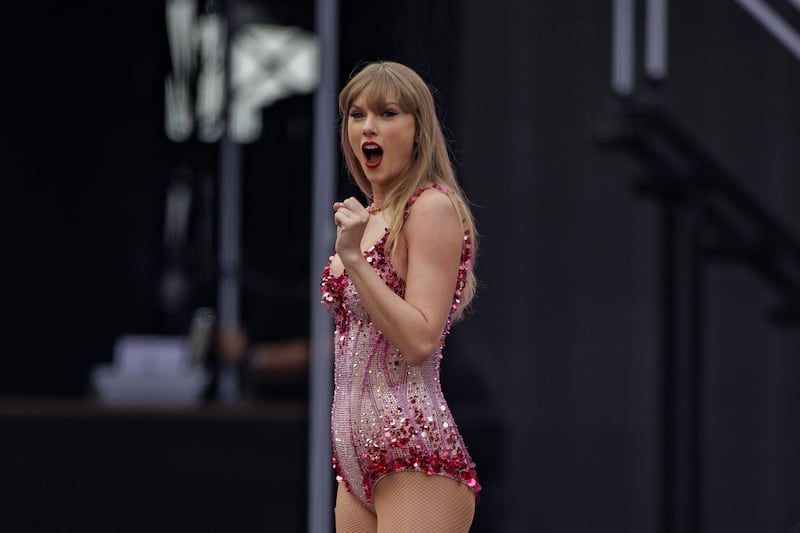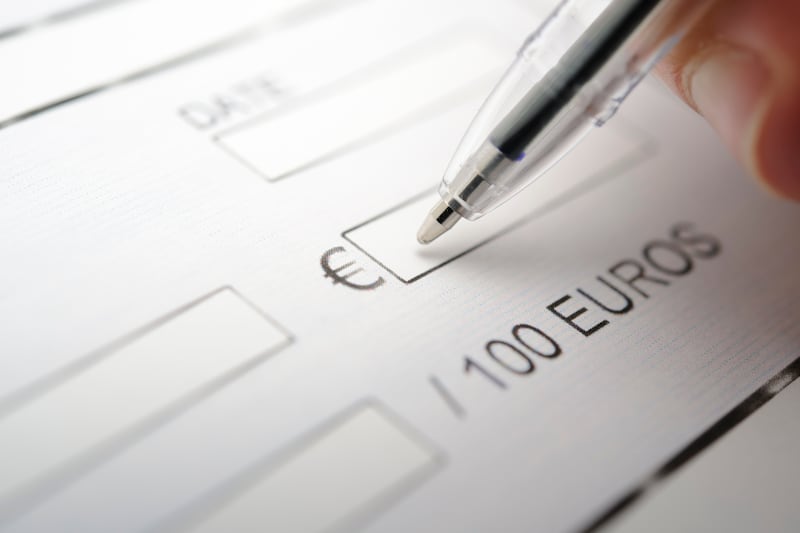These are the dearest of times. These are the cheapest of times. Some stuff that once cost the earth can now be had for buttons or less than buttons while we are simultaneously asked to pay through the nose for things that used to be free or cheap or even moderately affordable.
+ Homes
There was a time when owning a home was a fairly reasonable aspiration for even people on modest salaries. In the early 1990s a house in Dublin 7 could have been yours for not much more than £50,000, or about two to three times a fairly average salary at the time. Today that house costs close to €500,000 or more than 10 times a fairly average salary. The cost of renting that house, meanwhile, has jumped from around €1,000 20 years ago to close to €3,000 today.
– Interest rates
Although homes are a lot more expensive than they once were, the cost of borrowing the money that we need to buy them is much, much lower than it once was. In the 1980s, double-digit interest rates were the norm with some people unlucky enough to be burdened by rates of close to 20 per cent. Today, even after 10 ECB rate hikes and one small cut, fixed rates of less than 4 per cent are common. And for a decade until 2022 there were more than 100,000 tracker holders paying less than 2 per cent interest on their home loans.
+ Parking
It has become expensive to park a car in an Irish city or town. Free on-street parking began to disappear in the late 1990s, when the curse of the clamper fell upon Ireland. It can now cost €4 to park in Dublin city centre for an hour, with some private car-parks charging similar sums. The rising charges have seen hundreds of millions of euro spent on parking by Irish motorists since those halcyon days of free-for-alls while as many as 1,000 cars are clamped each week in Dublin alone, with the city council raking in more than €3 million each year in declamping fees.
RM Block

– Flights
When television crews were dispatched to interview young Irish people emigrating to London in the bleak 1980s they did not head for Dublin Airport but to Busáras as the notion that anyone swapping Irish dole queues for London building sites or offices would be able to fly across the Irish Sea was simply absurd. The cost of the hour-long flight topped £200 which, allowing for inflation, is almost €450 today. The 15-hour bus journey, on the other hand, cost a considerably more modest £40, or €80 in today’s money. Today, a canny flyer can frequently get to London for less than €10. And, of course, it isn’t just on those local routes that prices have plummeted thanks to a loosening of EU rules in 1992. A family trip from Milan to Paris in 1992 cost 16 times more than it does now with the minimum price for a ticket on that route falling from more than €400 then to about €25 today.
+ Baggage
In the 1990s, the notion that you would have to pay to bring your bags on holidays would have seemed laughable. Pricewatch remembers the bitter laughter of folk when they heard Ryanair were going to charge passengers €2.50 for checked-in bags in 2006. That seems like a steal these days, when bringing bags with you on holidays can add €300 to the cost of return flights for a family of four.
– Food
It used to be very expensive in Ireland – and the choice wasn’t great. Then it became very cheap. And now it is getting dearer again. Despite the supermarket rollercoaster ride, however, it is considerably cheaper than it once was – or at least we are spending a significantly lower percentage of our disposable income on it than we used to in times past. Today about 10 per cent of household income goes on food compared with more than twice that amount in the 1990s.
+ Television
This could probably go into either category. There was a time when the actual boxes were so dear that people could only afford to rent them whereas now you can pick up large flatscreen TVs in your local Tesco for half nothing. But in this context we will park the cost of the sets and focus on what is shown on them. In the old days the actual content – such as it was – didn’t cost anything – TV licence notwithstanding – and all you had to do was plug the cable into the wall socket and settle back to watch as many as six channels for up to 18 hours a day – or one channel for seven hours a day if you lived beyond the Pale and it was the 1970s. There are still ways to get your TV for free – Saorview is an excellent option – but there are many more ways to pay, between subscriptions to the likes of Virgin, Sky and Eir and streamers such as Netflix, Disney, Amazon, NowTV and Apple. It can add up to hundreds of euro each year.
– Pictures
There was a time when every home had a camera – or several. They were very dear and each one required film, which had to be developed at a fairly hefty cost unless you were prepared to wait several weeks to get your shots back. Our phones do all the work for us these days, and they do it better than we ever did in the past. And all for free – unless you count the cost of the actual phones.
+ Bins
In the environmentally unsound days of the 1990s we could happily throw whatever we wanted in the bins and then leave them out to be collected once a week at no cost – other than the cost of the taxes we paid and to the environment. But then bin charges were introduced. Then the collection services were privatised and charges climbed substantially. There won’t be many households that will have much change out of €300 over the next 12 months when the annual cost of refuse is taken care of – and with the waste companies complaining about losing money as a result of the deposit return scheme we are all likely to be asked to pay more in the months ahead. It is worth pointing out that while rubbish is now dear, we recycle a lot more than we used to.

While the sending of letters has a certain enduring romance, the art of the handwritten note has been sacrificed at the alter of handiness. Email has made communication with anyone, anywhere, at any time, almost effortless and much cheaper than it once was. Have you any idea how much a stamp costs now? It’s €1.40.
+ Roads
Our roads used to be terrible, as anyone who ever sat without a seatbelt in the back of a 1970s Ford Escort while two parents chain-smoked in the front on long journeys from Galway to Dublin will attest. But they were at least free. Now most motorways around the country cost money each time we use them, with a typical toll running to more than €2. That means if you use one of the better roads just twice a week, it will end up costing you more than €200 a year.
– Texting
Just over 30 years ago a man by the name of Neil Papworth sent another man by the name of Richard Jarvis a text message that read simply: “Merry Christmas.” As phones didn’t have keyboards at the time, Papworth had to use a computer to type and send the message. Fast-forward a year and text messages had become something of a cash cow for mobile-phone operators, who used to charge 11p or so (in old money) for a 160-character message, or a large multiple of that if the text crossed international borders. Today, text messages are often bundled into phone packages and the idea of paying for them is laughable.

+ Tickets
As anyone who was in the fortunate position of attending one of Taylor Swift’s three sold-out shows in Dublin earlier this summer will attest, going to concerts is not cheap. It is, in fact, wildly expensive and made all the more so by the administrative charges Ticketmaster adds on for emailing people their tickets. There was a time when the charges might have made a scintilla of sense because there was labour and materials involved in the act of sending out tickets. They had to be printed out and put in envelopes and posted to people. That is no longer the norm, but we still pay charges of up to €11 for each ticket the company sells to us. It will say the cost is to cover its “banking/merchant transaction fees and distribution costs and also helps pay for the technology, including installation and maintenance of computer hardware and software, telephone lines, associated labour in addition to access control at venues”.
– Knowledge
When Pricewatch was young, our father invested in the Encyclopaedia Britannica. The books were huge and the font was tiny. They contained a world of information. While we didn’t care enough to ask how much they cost, we know the set was very expensive. More than a decade ago the Encyclopaedia Britannica stopped printing hard copies of its books after sales collapsed. An online subscription to the site can be yours for just €80 a year, which includes all the information contained in all the volumes plus activities and games for kids. Games? Is it any wonder civilisation is on the precipice of doom?
+ Air
It used to be a service that every single petrol station in the country provided for free but now paying up to €1 for five minutes of air for your tyres is not uncommon.
– Phones
We have mentioned text messages but what about calls? In the 1990s such things were wildly expensive. Today, there is no reason that anyone anywhere has to pay anything for calling anyone. Admittedly, the broadband needed to use services such as FaceTime, WhatsApp or Skype comes at a cost, as do the smartphones you need to access such services – but making such calls is very, very cheap compared to what it once was. The story was even worse for anyone who tried to call home from overseas. Hotels used to charge ridiculous sums to let us use their phones and while mobile phones brought that madness to an end the mobile phone operators started ripping us off by charging insane roaming charges – a five-minute call from France to Ireland could cost more than a fiver. Then the EU stepped in and stopped it all.

+ Banking
It used to cost some money and then it was completely free. Now it costs a fair chunk of money again. If you manage your accounts carefully, just conducting everyday transactions will cost you as much as €100 a year, or much more if you occasionally exceed your agreed overdraft limits. And none of that includes government stamp duty or the tax on our plastic cards. And if you ever lodge a cheque or buy a cashier’s cheque, you can expect to pay through the nose for it.
– Audio and visual fun
People used to buy records, cassettes and CDs, and they were not cheap. Today you can sign up for free streaming services and listen to millions of tracks from your phone for free for the price of a single CD each month and listen to almost every song ever recorded, as much as you want. You could listen to music you like from now until the end of the century without spending a bean, making it the most affordable time in history to be a music lover. Streaming services and catch-up players mean we are no longer at the mercy of television programmers and can watch what we like, when we like, with the added bonus of avoiding ads. The fines that used to be imposed when we returned videos to rental stores days late in the old days are also a thing of memory, as is the need to invest huge sums in box sets.
+ Bags
In 2002 a charge was attached to plastic bags but it was for the best of reasons and it led to dramatic reductions in the number of discarded plastic blighting our landscape. In the year before the levy was rolled out, plastic bags made up as much as 5 per cent of the litter in Ireland, compared with less than 0.3 per cent now. But in more recent times, retailers have been phasing out plastic bags and charging more than 70 cent for heavier-duty plastic bags that they pay no levy on at all. More and more retailers are charging us now for paper bags too and claiming it is for environmental reasons.













